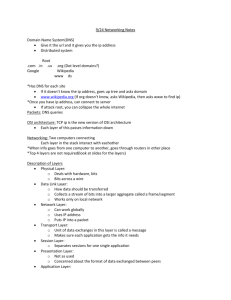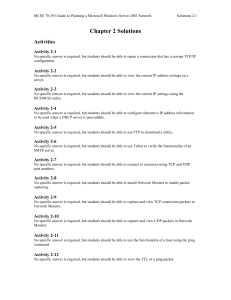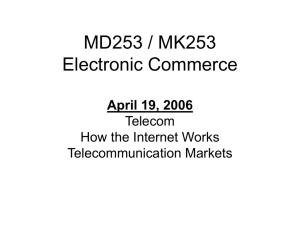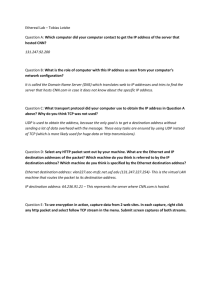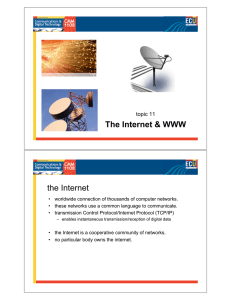File
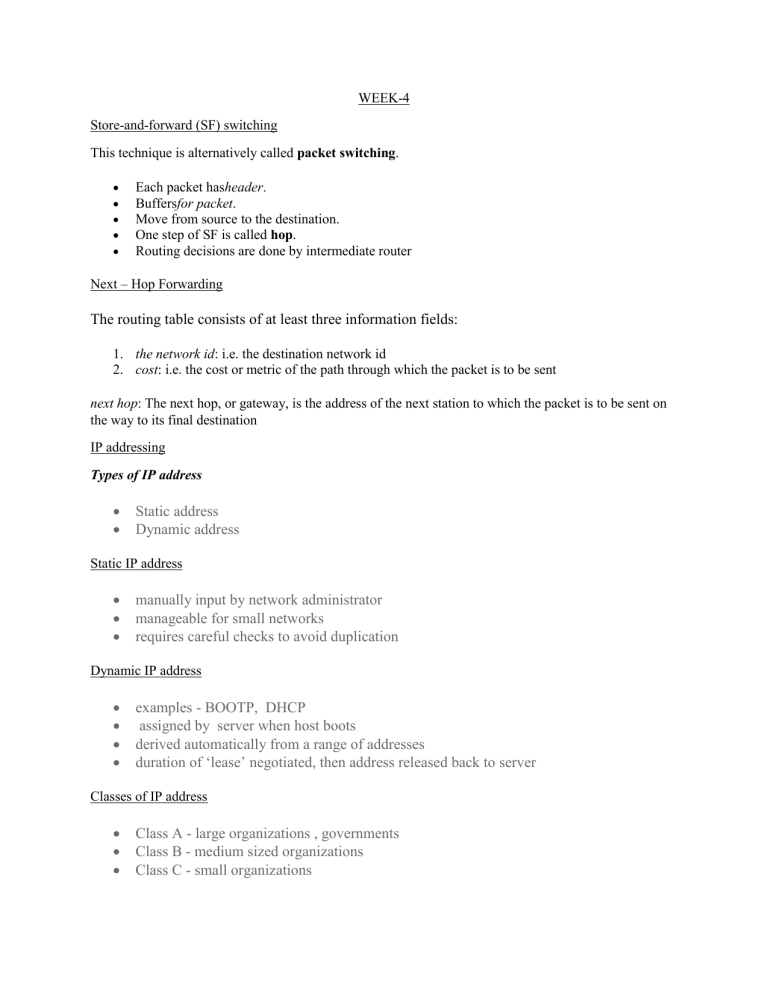
WEEK-4
Store-and-forward (SF) switching
This technique is alternatively called packet switching .
Each packet has header .
Buffers for packet .
Move from source to the destination.
One step of SF is called hop .
Routing decisions are done by intermediate router
Next – Hop Forwarding
The routing table consists of at least three information fields:
1.
the network id : i.e. the destination network id
2.
cost : i.e. the cost or metric of the path through which the packet is to be sent next hop : The next hop, or gateway, is the address of the next station to which the packet is to be sent on the way to its final destination
IP addressing
Types of IP address
Static address
Dynamic address
Static IP address
manually input by network administrator
manageable for small networks
requires careful checks to avoid duplication
Dynamic IP address
examples - BOOTP, DHCP
assigned by server when host boots
derived automatically from a range of addresses
duration of ‘lease’ negotiated, then address released back to server
Classes of IP address
Class A - large organizations , governments
Class B - medium sized organizations
Class C - small organizations
An Internet Protocol address (IP address) is a numerical label assigned to each device (e.g., computer, printer) participating in a computer network that uses the Internet Protocol for communication.
IP
Address
Class
Total # Of
Bits For
Network
ID / Host
ID
First
Octet of
IP
Address
# Of
Network
ID Bits
Used To
Identify
Class
Usable #
Of
Network
ID Bits
Number of
Possible
Network
IDs
# Of Host
IDs Per
Network ID
Class A
Class B
Class C
8 / 24
16 / 16
24 / 8
0 xxx xxxx
10 xx xxxx
110 x xxxx
1
2
3
8-1 = 7 2 7 -2 = 126
16-2 = 14
24-3 = 21
2 14 =
16,384
2 21 =
2,097,152
2 24 -2 =
16,277,214
2 16 -2 =
65,534
2 8 -2 = 254
TCP/IP networking
IP : Internet Protocol
UDP : User Datagram Protocol
RTP, traceroute
– TCP : Transmission Control Protocol
HTTP, FTP, ssh
TCP
• Reliable, full-duplex , connection-oriented , stream delivery
– Interface presented to the application doesn’t require data in individual packets
–
Data is guaranteed to arrive, and in the correct order without duplications
• Or the connection will be dropped
–
Imposes significant overheads
Applications of TCP
•
Most things!
– HTTP, FTP, …
• Saves the application a lot of work, so used unless there’s a good reason not to
TCP implementation
• Connections are established using a three-way handshake
•
Data is divided up into packets by the operating system
•
Packets are numbered, and received packets are acknowledged
• Connections are explicitly closed (or may abnormally terminate)

